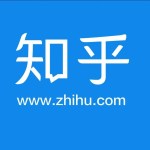How-to & Go-to Guides of All Things Around China.
As China’s fastest-growing coffee chain, Luckin Coffee (瑞幸咖啡) has disrupted the global coffee industry with its tech-driven model and aggressive expansion. Founded in 2017, the brand now rivals Starbucks in China and is rapidly expanding overseas. This guide explores Luckin’s unique business model, global ambitions, and how it stacks up against Starbucks.
1. The Luckin Coffee Phenomenon: Speed, Technology, and Affordability
A New Coffee Paradigm
Luckin redefined coffee consumption in China by combining digital convenience with affordable pricing:
- App-Driven Ordering: 90% of orders are placed via its app, enabling seamless pickup or delivery .
- Cost Efficiency: Prices start at ¥15-25 ($2.10-$3.50), undercutting Starbucks’ ¥30-40 ($4.20-$5.60) .
- Hyper-Expansion: By 2025, Luckin operates over 20,000 stores in China, surpassing Starbucks’ 6,000+ locations .
Tech-Driven Operations
- AI Recommendation Engine: Analyzes user preferences to suggest personalized drinks, boosting sales by 20% .
- Automated Supply Chain: From bean sourcing to store inventory, AI optimizes every step, reducing waste by 15% .
2. Global Expansion: From Singapore to the Middle East
Strategic Market Entry
Luckin’s overseas strategy focuses on high-growth regions with strong tea and coffee cultures:
- Southeast Asia:
- Singapore: Launched in 2023, with 45 stores by 2025. However, pricing ($4.80-$6.80) drew criticism for being too high compared to local competitors .
- Malaysia: Partnered with Hextar Industries in 2025, opening two pilot stores in Kuala Lumpur and planning nationwide expansion .
- Middle East & India:
- Partnered with Kuwait’s Americana Group to launch joint ventures in 13 countries, targeting markets where Starbucks holds dominance (e.g., Dubai has 202 Starbucks stores) .
- India: Plans to leverage Americana’s local expertise to compete with Starbucks’ 146 stores .
Localization Strategies
- Product Innovation:
- 生椰拿铁 (Coconut Latte): A hit in China (1.2 billion cups sold), but faced backlash in Singapore due to high sugar/saturated fat content .
- Regional Flavors: In Malaysia, offers durian-flavored lattes to cater to local tastes .
- Payment Solutions: Partnered with Stripe to support credit cards, Apple Pay, and local e-wallets (e.g., GrabPay in Malaysia) .
3. Luckin vs. Starbucks: A Battle of Titans
Market Positioning
- Luckin:
- Digital First: Prioritizes speed and convenience over in-store experience.
- Youth-Oriented: Targets millennials and Gen Z with trendy campaigns (e.g., collaborations with Chinese pop stars) .
- Starbucks:
- Third Space Concept: Emphasizes comfortable seating and socializing.
- Premium Image: Charges a premium for ambiance and brand loyalty.
Operational Models
- Store Formats:
- Luckin: 90% small “pickup-only” stores (10-20 sqm) to reduce rent costs .
- Starbucks: Larger stores (50-100 sqm) with seating, averaging 3x the rent of Luckin .
- Supply Chain:
- Luckin: Sources coffee from Brazil, Ethiopia, and Yunnan (China), ensuring quality at scale .
- Starbucks: Relies on global partnerships but faces higher costs due to its premium sourcing .
Financial Performance
- China Market:
- Luckin’s 2024 revenue: ¥14.5 billion ($2.03 billion), surpassing Starbucks China’s ¥13.2 billion ($1.85 billion) .
- Profit Margin: Luckin’s 15% vs. Starbucks’ 12% .
- Global Reach:
- Starbucks: 37,000+ stores in 80+ countries.
- Luckin: ~100 stores in 5 countries (2025), aiming for 500+ by 2027 .
4. Challenges and Opportunities
Cultural Adaptation
- Health Concerns: Luckin’s sugary drinks face scrutiny in markets like Singapore, where its Coconut Latte was labeled a D-grade (unhealthy) .
- Local Competition: In Southeast Asia, Luckin competes with Flash Coffee (Singapore) and Kopi Tiam (Malaysia), which offer cheaper, traditional brews .
Sustainability Initiatives
- Coconut Sourcing: Partnered with Indonesia’s Banggai Islands to create a 专属生椰岛 (Exclusive Coconut Island), ensuring sustainable supply for its Coconut Latte .
- Carbon Neutrality: Aims to achieve net-zero emissions by 2030 through energy-efficient stores and recycled packaging .
5. How to Experience Luckin Coffee
For Travelers in China
- Ordering:
- Download the Luckin Coffee app (available on App Store and Google Play).
- Use WeChat Pay or Alipay for seamless payments.
- Try signature drinks like 生椰拿铁 (Coconut Latte) or 厚乳拿铁 (Creamy Latte).
- Locations: Over 20,000 stores in cities like Beijing, Shanghai, and Chengdu, often near subway stations or office buildings.
For International Visitors
- Overseas Availability:
- Singapore: 45 stores in malls and business districts.
- Malaysia: Two stores in Kuala Lumpur (2025), with more planned .
- Payment: Use credit cards or local e-wallets (e.g., PayNow in Singapore) .
7. Why Luckin Coffee Matters
1. Democratizing Coffee
By making high-quality coffee accessible to millions, Luckin has doubled China’s coffee-drinking population since 2019, from 300 million to 600 million .
2. Tech-Driven Innovation
Its app-based model and AI algorithms set a new standard for retail efficiency, inspiring global brands like Starbucks to accelerate their digital transformations .
3. Global Ambitions
With plans to enter Europe and the U.S. by 2026, Luckin aims to become the first Chinese coffee brand to rival Starbucks on a global scale .
8. Conclusion
Luckin Coffee is more than a coffee chain—it’s a tech and cultural phenomenon reshaping global retail. While Starbucks dominates with its third-space experience, Luckin’s speed, affordability, and digital prowess have made it a force to be reckoned with. Whether you’re sipping a Coconut Latte in Beijing or trying a durian-inspired creation in Kuala Lumpur, Luckin offers a taste of China’s innovation and ambition.
Know more about China, Check more on GotoChina.Guide!








